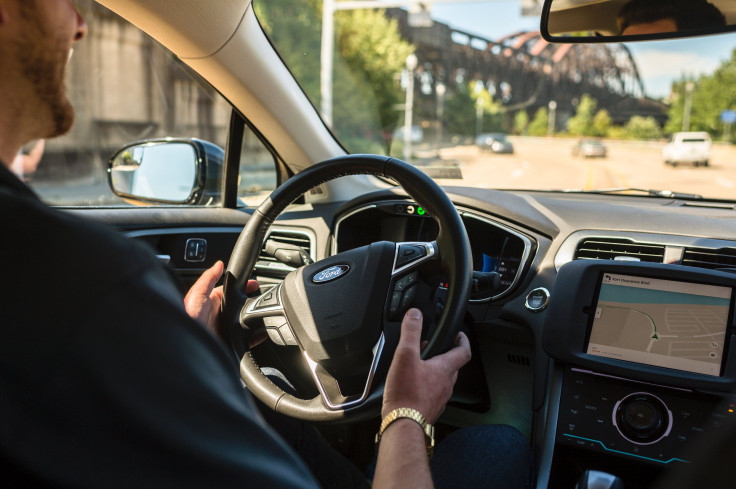The Perils Of Autonomous Driving And 'Software On Wheels'

You likely try to keep your car in tip-top shape. You change your oil, make sure your tires are roadworthy, give your engine regular tune-ups, etc. But what most drivers don’t realize is that with today’s advanced motor vehicles, that’s only half the job.
The most crucial elements of today’s cars can’t be kicked, tightened or oiled. While a quick peek under the hood may have once sufficed to ensure that everything is humming along nicely, virtually all the critical functions in today’s cars that were once exclusively mechanical are now controlled by hundreds of onboard computers running tens of millions of lines of code.
Your average new car runs on more lines of software than an F-35 fighter jet, earning today’s vehicles the moniker “software on wheels.” But while new automotive systems improve not only the driving experience but overall driver safety as well, what they could be called instead of “software on wheels” is “errors on wheels.” That’s because in your standard automotive software, there are about 50 errors for every 1,000 lines of code. And even with standard quality assurance checks, up to 15 percent of errors in onboard code can remain undetected.
For systems such as navigation and infotainment, that can be really inconvenient. When these systems break down due to software bugs, you can end up driving around without your favorite tunes or having to resort to good ol’ maps to reach your destination.
But these are the least of your worries. There are a significant number of much more critical computer-based automotive systems which, if shut down due to software malfunctions, can put cars — and their drivers — in serious peril.
Anti-Lock Braking Systems (ABS)
ABS braking systems have become standard thanks to their contribution to driver and road safety. While today’s drivers are still required to hit the brakes, it is software that ultimately controls the actual braking response. And if the software isn’t working properly, the car isn’t going to stop properly. This summer, Volkswagen recalled 766,000 cars across the globe because the braking system had the potential to break down when the driver over-steered, under-steered or came to a sudden stop. In such cases, a simple software update could be the difference between life and death.
Engines
The entirety of the engine blocks in vehicles coming off today’s assembly lines rely on software. Air-fuel mixtures, fuel injections, ignition timing, idle speed and more that were once set or controlled by mechanical and pneumatic means now rely on software and embedded sensors to operate, and they malfunction more often than we would like to believe.
Major car manufacturers from Audi to Ford have had to recall millions of vehicles to repair flaws and malfunctioning onboard software that has been responsible for engines shutting down mid-acceleration or for engines that keep running despite drivers switching them off.
Advanced Driver-Assistance Systems
Once, Advanced Driver-Assistance Systems (ADAS) were luxuries that few drivers enjoyed. Now, they have now become an essential part of the driving experience. Newer systems even allow some vehicles to steer and brake autonomously on highways, letting the driver sit back and relax. Other such systems include rearview mirrors that light up when another vehicle is in the driver’s blind spot. ADAS’ assistance in parallel parking has evolved to the point that many newer drivers don’t know how to parallel park at all (major cities including Chicago and over 15 U.S. states have even taken parallel parking off their licensing exam).
But as these systems evolve from being a luxury to becoming the brains behind autonomous driving, this begs the question: What happens when they go down? Who (or what) is in control?
A Road Map to Car Safety
Car malfunctions — physical- and software-related — have already found their way onto the roads. Onboard software glitches are not something that can easily be detected and certainly not repaired by a weekend tinkerer, so the onus for resolving these threats rests with manufacturers and OEMs.
Software malfunction detection and repair methods need to improve. This is crucial to reducing the time cars are taken off the road for software repairs, and to keeping their safety-critical systems running.
That is why the ability to detect and repair software Over-the-Air (OTA) — much in the same way that smartphone operating systems are fixed and updated over the air without users often even knowing about it — needs to become as universal as seatbelts. For most vehicles, these kinds of updates are limited to infotainment systems.
Consumers should come to expect safe, future-proof cars with the assurance that software glitches won’t cause failures in critical systems. Without such reliability, it would make more sense for drivers to buy a horse. New safety features and capabilities in the auto industry have traditionally come only when consumers — or regulators acting on their behalf — have demanded them. The time to start making those demands is now.
Zohar Fox is the CEO and co-founder of Aurora Labs.
© Copyright IBTimes 2025. All rights reserved.





















